Did you know that the Endler guppy, also known as Endler’s livebearer (Poecilia wingei), is one of the most captivating and beginner-friendly fish you can add to your aquarium? A close relative of the common guppy, this tiny species has gained popularity among aquarists for its stunning colors, peaceful temperament, and low-maintenance care.
Whether you’re new to fishkeeping or a seasoned hobbyist, the Endler guppy makes an excellent addition to your tank.
Let’s explore what makes the Endler guppy such a popular choice. For one, their peaceful nature means they coexist well with other fish, plants, shrimp, and snails in a community tank. Unlike some more delicate species, they are hardy and adaptable, thriving in a range of water conditions.
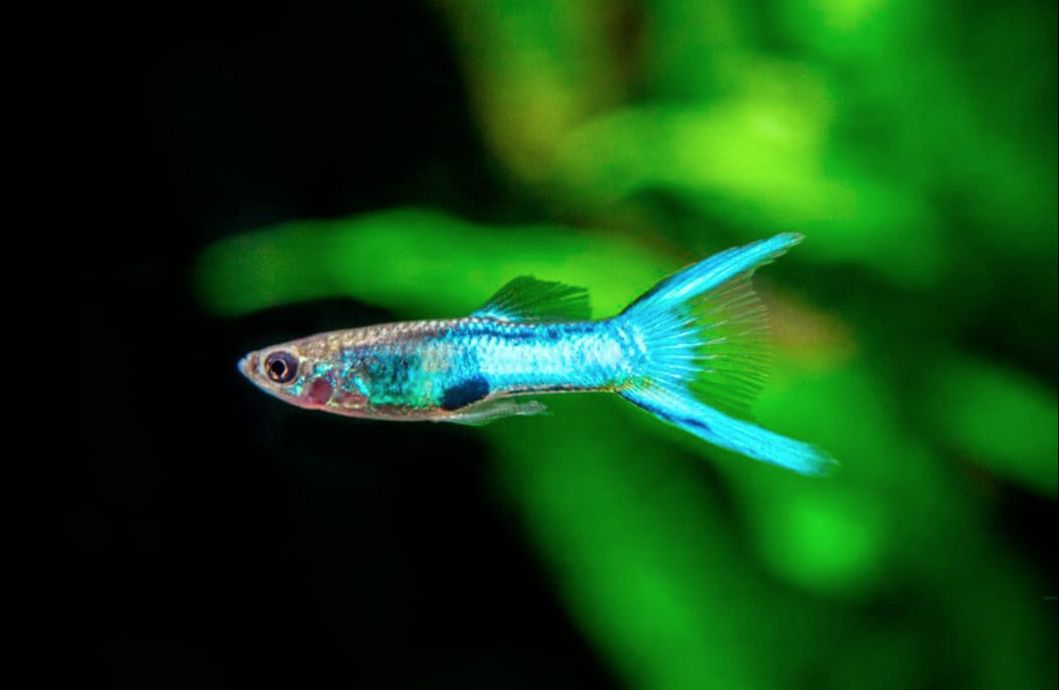
Contents
Habitat in the wild
The Endler Guppy: A Unique and Endangered Aquarium Treasure
Endler guppies (Poecilia wingei) are part of the Poeciliidae family, a group of freshwater livebearers that give birth to live fry rather than laying eggs. This family includes many popular aquarium species, such as the common guppy (Poecilia reticulata), mollies, swordtails, and platies. These fish are beloved by aquarists for their bright colors, fascinating behaviors, and ease of care.
Though closely related to the common guppy, the Endler guppy stands out due to its smaller size and vibrant, unique color patterns. Aquarists have come to prize Endlers for their peaceful temperament and adaptability in a range of tank environments, making them ideal for both beginners and experienced hobbyists.
Natural Habitat and Rediscovery
The natural habitat of Endler guppies is in northern South America, specifically in the lagoons and streams of Venezuela. First discovered in 1937 by Franklyn F. Bond in Lagoa dos Patos, this species went largely unnoticed for decades and was even considered extinct for a long time. It wasn’t until the late 1970s, when Dr. John Endler rediscovered the fish, that it became recognized and more widely available in the aquarium trade.
Endler guppies thrive in shallow, slow-moving waters rich in vegetation, such as small streams, ditches, and pools. Initially, Lagoa dos Patos was a brackish lagoon connected to the ocean. Over time, a sandbar separated it from the sea, turning it into a freshwater habitat—a process that allowed Endler guppies to adapt and thrive in these conditions.
Conservation Concerns: A Species at Risk
Despite their popularity in home aquariums, Endler guppies are under significant threat in the wild. Habitat destruction, pollution, and human encroachment have dramatically reduced their natural population. Once found in multiple lakes and waterways, today their natural presence is confirmed in only one of the four original locations.
Although this species faces extinction in the wild, it has not been officially listed as endangered, despite ongoing threats from industrial waste disposal sites approved near Lagoa dos Patos. Pollution continues to degrade the water quality, and without intervention, the natural population is likely to disappear.
Scientific Debate: Separate Species or Just a Variation?
A lingering debate exists among scientists regarding the classification of Endler guppies. While some argue that they should be considered a separate species from the common guppy, others point out that the two can interbreed and produce fertile offspring. Additionally, their natural habitats overlap in certain areas. However, differences in their preferred environmental conditions—Endler guppies favor warm, still waters, while common guppies thrive in cooler, fast-moving streams—have likely prevented hybridization in the wild.
Aquarists’ Role: How to Help
Aquarists play a vital role in conserving this beautiful species. One common mistake is housing Endler guppies with aggressive or incompatible species, which can cause stress and shorten their lifespan. Overcrowding can also be an issue, leading to poor water quality and health problems. It’s important to replicate their natural environment by providing a tank with calm water flow, plenty of plants, and warm water.
By creating the right conditions and raising awareness of their conservation status, hobbyists can help ensure that Endler guppies continue to thrive in both home aquariums and the wild.
| Characteristic | Description |
|---|---|
| Size | Typically smaller than common guppies, ranging from 1-1.5 inches in length |
| Lifespan | Average lifespan of 1.5 to 2 years, although some individuals can live longer with proper care |
| Body Shape | Slender and streamlined body shape, well-suited for swimming |
| Coloration | Endler guppies exhibit a wide range of colors, including vibrant reds, blues, oranges, greens, and metallic hues |
| Fin Variations | Varied fin shapes and sizes, including fan-shaped, pointed, and lyre-shaped fins |
| Males vs. Females | Males display more elaborate coloration and patterns on their body and fins, whereas females are generally less colorful |
| Behavior | Endler guppies are active swimmers, constantly exploring their environment and engaging in social interactions |
| Water Parameters | Temperature: Endlers prefer a temperature range of 75°F to 82°F (24°C to 28°C) |
| pH: They thrive in slightly alkaline water with a pH range of 7.2 to 8.0 | |
| Water Hardness: They can tolerate moderate to hard water conditions | |
| Diet | Endler guppies are omnivorous and have a versatile diet. They enjoy a mix of high-quality commercial flakes, pellets, and occasional live or frozen foods such as brine shrimp, daphnia, or bloodworms |
| Compatibility | Endler guppies are generally peaceful and can coexist with other small, non-aggressive fish species. They thrive in community tanks |
| Breeding | Endler guppies are livebearers, meaning females give birth to live fry. They are prolific breeders and can reproduce at a young age |
| Tank Requirements | A well-planted tank with plenty of hiding spots, such as dense vegetation and driftwood, provides security for Endler guppies. They also benefit from a gentle water flow, which mimics their natural habitat |

Description
Endler Guppies: Size, Lifespan, and Stunning Color Varieties
Endler guppies (Poecilia wingei) are known for their small size and vibrant colors, making them a popular choice among aquarists. Males are especially tiny, typically growing no larger than 1 inch (2–2.5 cm), while females can reach up to 1.4 inches (3.5 cm). Their compact size makes them ideal for smaller aquariums or community tanks with limited space. Additionally, their charming appearance and peaceful nature make Endlers a favorite among those who enjoy keeping smaller fish species.
Lifespan: How Long Do Endler Guppies Live?
In captivity, the lifespan of Endler guppies usually ranges from 1 to 2 years, with females often living 6 to 12 months longer than males. Water temperature plays a critical role in their longevity—higher temperatures speed up their metabolism, which can reduce their lifespan. To maximize their lifespan, it’s recommended to maintain tank water at around 72°F to 78°F (22°C to 26°C), as higher temperatures can accelerate aging.
Color Variations in Selectively Bred Endler Guppies
Over the years, selective breeding has led to a variety of stunning color patterns in Endler guppies, many of which you wouldn’t encounter in the wild. For example, the Gold Endler guppy features a brilliant golden body with small red spots and a striking emerald-green mark near its tail. The tail fin has vibrant red edges with a transparent center, creating a visually captivating contrast.
Another popular variation is the Japan Blue Endler, known for its light-blue body and tail accented with a black spot along the side and a silvery-colored head. This particular breed has become a favorite due to its subtle yet eye-catching coloration.
While it’s impossible to describe all the beautiful varieties of Endler guppies in one place, some of the most popular include:
Types of endler guppy
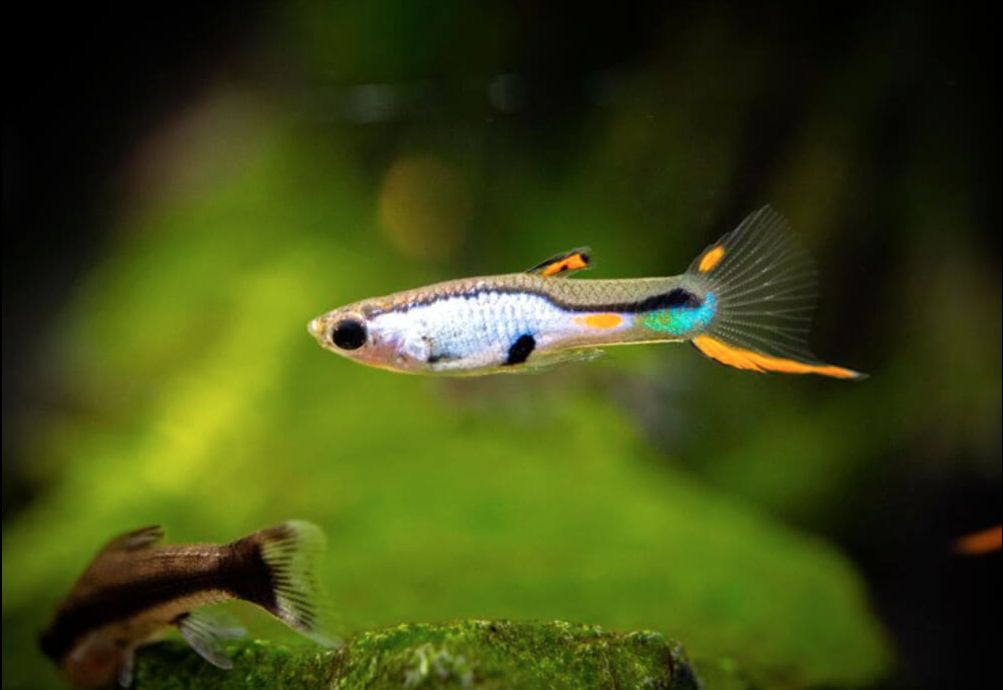
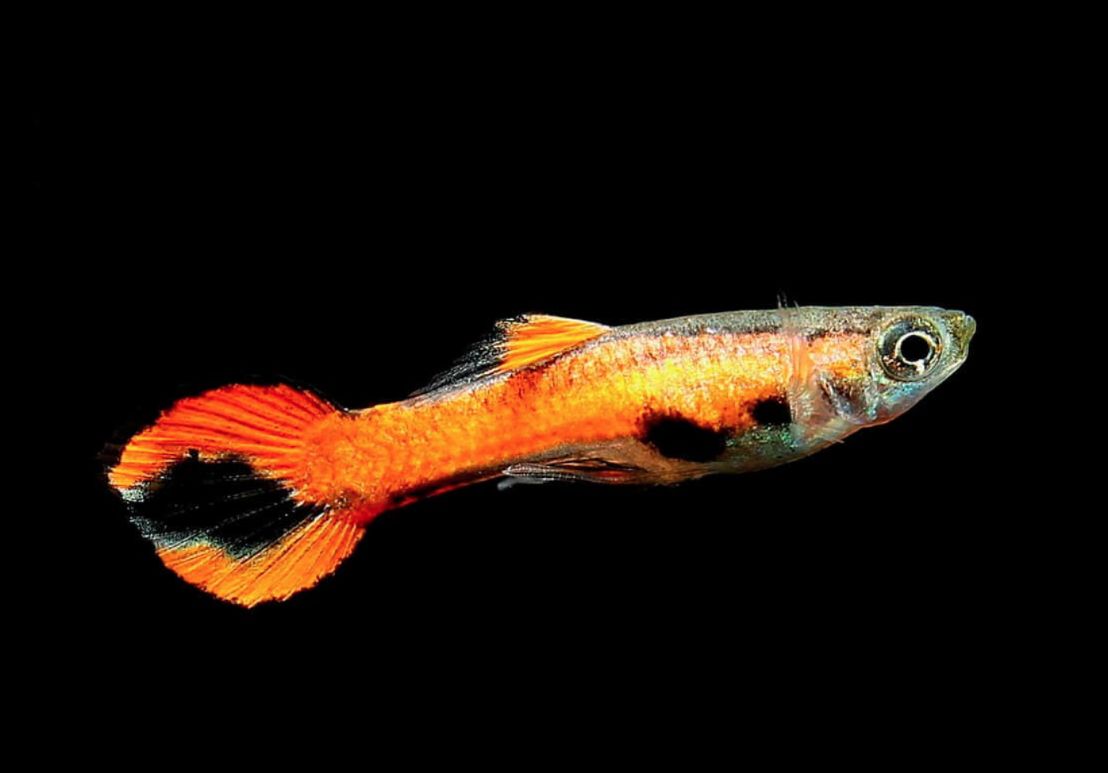



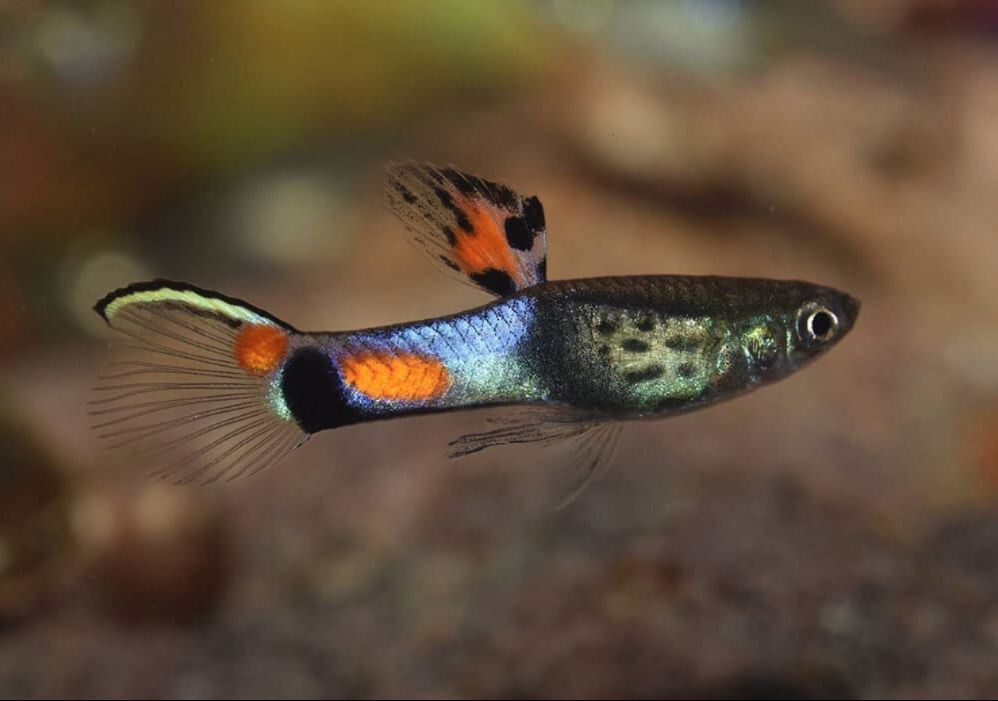
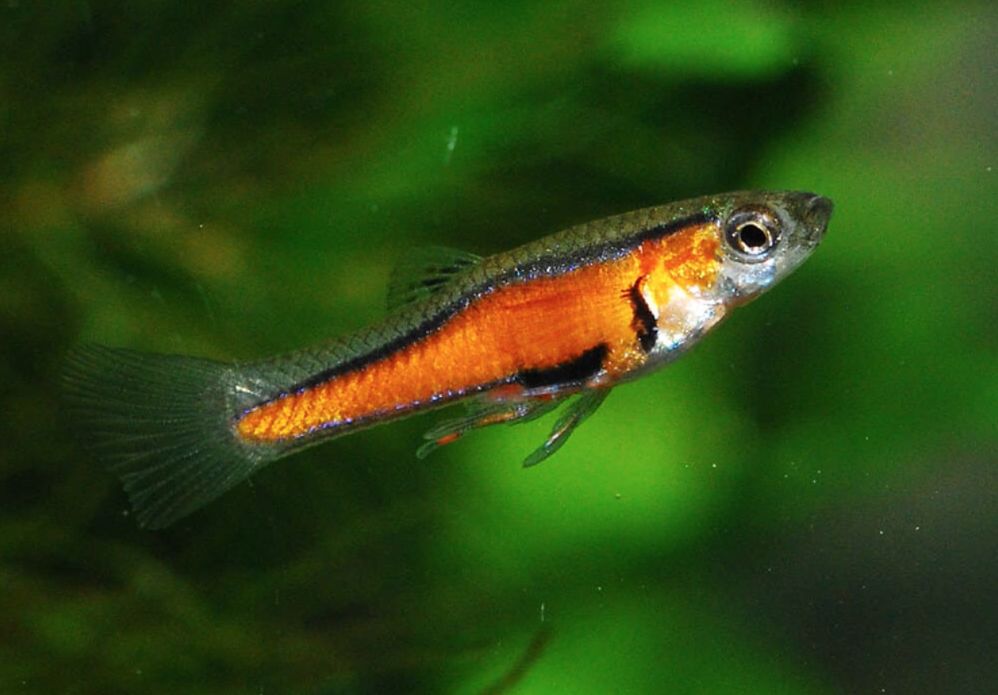

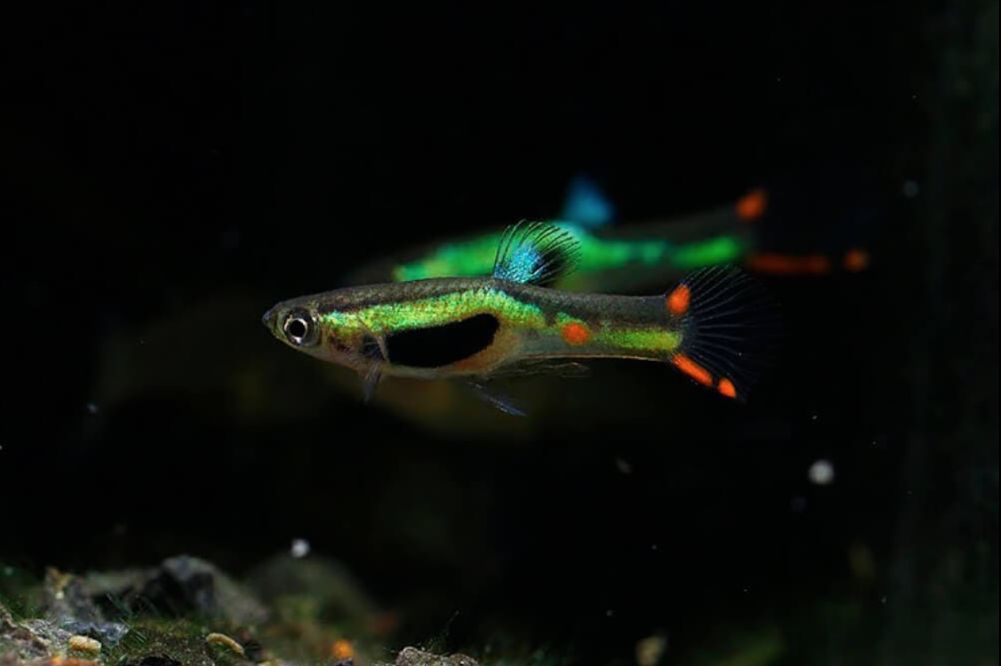

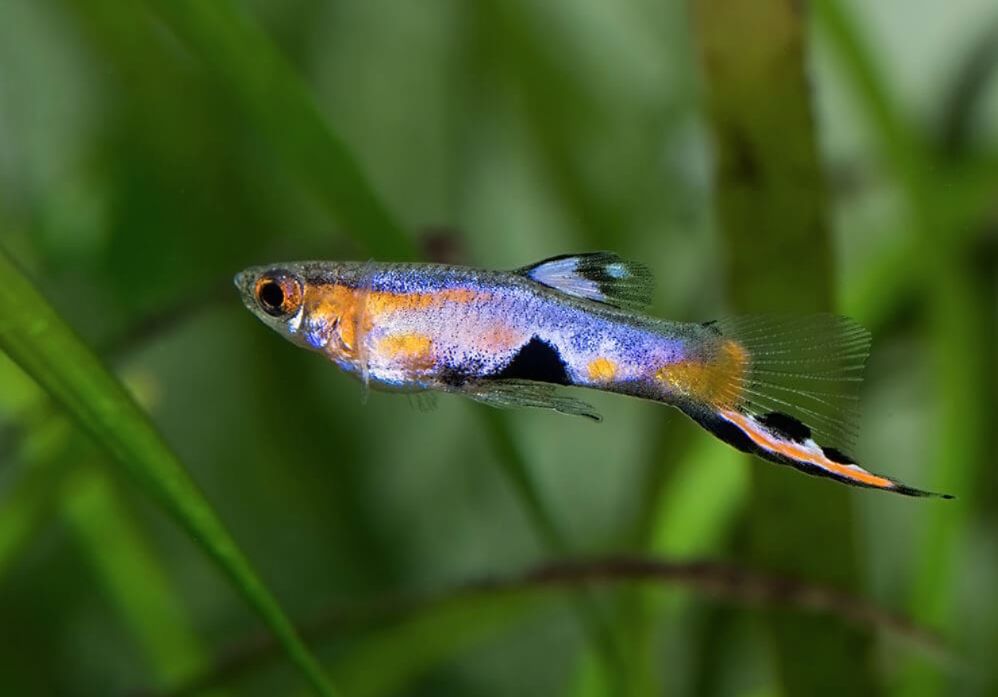

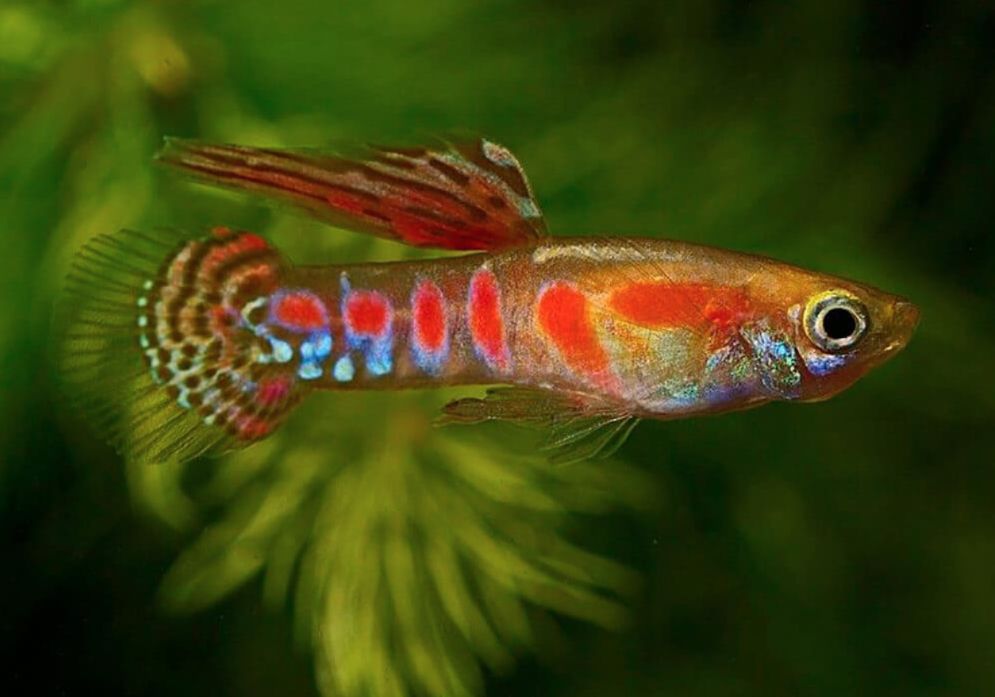
Difficulties in keeping
Endler guppies are incredibly easy to care for, making them an excellent choice for both beginner and experienced aquarists. These tiny fish thrive in groups, so it’s best to start with two or three pairs in your home aquarium. Since they don’t require much space, a small tank is perfectly sufficient, and they aren’t very demanding when it comes to water parameters. As long as the tank is well-maintained, they will do well in a range of conditions.
Because of their active nature, keeping multiple pairs together ensures they remain happy and engaged. However, if you want to avoid breeding and mixed offspring, it’s important not to house males and females of different species in the same tank. A good option is to keep only male fish from various species together, as this will prevent any hybridization.
Another key consideration is maintaining the proper ratio of male to female fish in the tank—ideally 1 male to 2 or 3 females. This balance prevents male fish from constantly chasing the females, which can lead to stress and negatively impact their health.
Care and keeping in a tank
Tank size
Tank Size Recommendations for Endler Guppies
Endler guppies (Poecilia wingei) are small fish, but it’s important to provide them with enough space to thrive. While they are often kept in nano tanks due to their size, it’s recommended to give them a bit more room to encourage healthy swimming behavior and maintain stable water parameters. A minimum tank size of 10 gallons (38 liters) is suggested for a small group, especially if you plan on breeding them.
Although Endler guppies can survive in smaller tanks, providing them with a larger environment offers numerous benefits. Not only does it allow for better water quality and stability, but it also supports their natural schooling behavior. If you’re looking to house a larger group or keep additional species, a 20-gallon (75 liters) tank or bigger is a better choice.
Additionally, make sure the tank is securely covered, as Endlers are known to jump, especially when startled or active. A lid or cover made of mesh or glass is ideal for preventing accidents while still allowing airflow.
Are Endler Guppies Schooling Fish?
Yes, Endler guppies are schooling fish and also livebearers, meaning they give birth to live young rather than laying eggs. In the wild, they often form loose schools, particularly when foraging for food or seeking protection from predators. This social behavior helps them feel secure and reduces stress.
In an aquarium setting, Endler guppies display similar schooling behavior. Keeping them in groups of their own kind promotes social interaction and mimics their natural habitat. A small group with multiple females and a few males is ideal for maintaining harmony and ensuring the fish remain healthy.
Water parameters
Tank Conditions for Endler Guppies
Caring for Endler guppies is straightforward, as they are not very demanding when it comes to water conditions. However, providing them with the right environment ensures they stay healthy and thrive. Here are the optimal tank conditions for Endler guppies:
- Temperature: The ideal water temperature for Endler guppies is between 75°F and 82°F (24°C to 28°C). Maintaining this range supports their health, promotes breeding, and keeps their metabolism steady. It’s important to note that temperatures above 86°F (30°C) can accelerate their metabolism, shortening their lifespan.
- Water Hardness: Endler guppies can tolerate moderate to hard water, with an ideal hardness range of 10 to 20 dGH (degrees of general hardness). Maintaining this range helps replicate their natural habitat and ensures they remain healthy.
- pH Levels: Endler guppies prefer slightly alkaline water, with a recommended pH range between 7.2 and 8.0. Stability in pH is crucial, as rapid fluctuations can stress the fish and impact their well-being.
For the best results, regularly monitor your tank’s water parameters using a reliable test kit.
Tank setup: decorations and plants
Decorating your aquarium for Endler guppies can be both visually appealing and beneficial for the fish’s well-being. A well-designed tank not only enhances aesthetics but also provides necessary hiding spots and enrichment, creating a healthier environment for your guppies. Here are some decor ideas to consider:
- Live Plants: Endler guppies thrive in tanks filled with live aquatic plants. Popular choices like Java moss, Amazon sword, Anubias, and Hornwort add natural beauty while offering hiding spots and resting areas for your fish. In addition to enhancing the visual appeal, plants help maintain water quality by absorbing excess nutrients. Use a mix of small-leaved plants in some areas while leaving open space for swimming.
- Floating Plants: Floating plants like Water Sprite, Water Lettuce, or Amazon Frogbit create shade and cover, which make Endler guppies feel more secure. These plants help diffuse lighting and offer protection for juveniles, making them a great addition to the tank.
- Driftwood and Rocks: Adding natural driftwood pieces or rocks gives your guppies interesting spaces to explore. Strategically placed, these elements create caves and crevices for shelter. Driftwood and rocks can also enhance the aquarium’s overall appearance, making it more natural and dynamic.
- Substrate: A fine-grained substrate like sand or small gravel is ideal for Endler guppy tanks. This provides a natural-looking base for the plants and allows for the growth of beneficial microorganisms that contribute to a healthy tank environment.
- Open Swimming Space: While hiding places are important, it’s equally crucial to leave enough open areas for your active Endler guppies to swim. They love exploring and need space to move freely, so balancing decor and open water is key.
When setting up your aquarium, remember to arrange the decor in a way that allows for easy maintenance. Avoid overcrowding the tank with too many plants or decorations, as this can limit swimming space and create water flow issues. A thoughtful balance of open areas and strategically placed decor will make your tank both functional and beautiful.
Filtration
To keep the tank clean, a small internal filter not creating a strong water flow is enough. You should renew about 25-30% of the water amount weekly. Since the abrupt change of tank water temperature and quality negatively impacts the fish males’ fins, it’s desirable to perform water renew often, but in small amounts.
Diet
When selecting food for Endler guppies, it’s important to keep in mind their small mouths and the fact that they spend most of their time in the upper and middle layers of the tank. Additionally, to support their digestive health, their diet should include plant-based components.
In the wild, Endler’s guppies feed on a variety of foods such as maggots, small worms, and algae. In a home aquarium, you can mimic this natural diet by offering a mix of artificial, live, and plant-based foods. Good options include high-quality tropical flakes, vegetable-based flakes, and dry foods with plant supplements. Live and frozen foods like small daphnia, cyclops, and bloodworms are also excellent for variety, and adding spirulina as a plant-based supplement can further support their nutritional needs.
One important point to note is that Endler guppies are prone to obesity. Overfeeding is a common mistake, and it’s essential to avoid giving them too much food at once. To prevent this, feed them small portions more frequently, and be mindful of their activity levels and overall health.
A well-balanced diet is key to keeping your guppies healthy and vibrant. Offering them a staple diet of high-quality commercial flakes or pellets specifically formulated for tropical fish is a great start. Look for products that contain a balanced blend of proteins, vitamins, and minerals, as well as additives like color enhancers or spirulina for extra health benefits.
To ensure your Endler guppies thrive, provide them with a varied diet that includes both animal and plant-based foods. This approach will not only support their digestion but also enhance their coloration and vitality, making them an even more striking addition to your aquarium.
Tank mates
This guppy fish prefers swimming in upper water layers, and it is a good tank mate for all non-aggressive fishes.
Due to the fish size, you should keep it only with small and peaceful fishes. In general, Endler guppy is a peaceful and harmless fish, which can suffer from other fishes. It can get along well with common shrimps and with small ones (like a cherry shrimp), too.
Endler livebearer are generally peaceful and can coexist with a variety of other peaceful fish species in a community aquarium. Here are some popular tank mates that can be suitable companions for endler livebearers:
- Harlequin Rasboras (Trigonostigma heteromorpha)
- Neon Tetras (Paracheirodon innesi)
- Ember Tetras (Hyphessobrycon amandae)
- Glowlight Tetras (Hemigrammus erythrozonus)
- Black Neon Tetras (Hyphessobrycon herbertaxelrodi)
- Cardinal Tetras (Paracheirodon axelrodi)
- Rummy Nose Tetras (Hemigrammus rhodostomus)
- Dwarf Gouramis (Trichogaster lalius or Trichogaster chuna)
- Sparkling Gouramis (Trichopsis pumila)
- Celestial Pearl Danios (Danio margaritatus)
- White Cloud Mountain Minnows (Tanichthys albonubes)
- Dwarf Rasboras (Boraras spp.)
- Guppies (Poecilia reticulata)
- Platies (Xiphophorus spp.)
- Corydoras Catfish (Corydoras spp. – pygmy cory, panda cory, adolfoi catfish)
- Otocinclus Catfish (Otocinclus spp.)
- Bristlenose Plecos (Ancistrus spp.)
While Endler guppies are generally peaceful and can coexist with many species, there are some tank mates that may not be suitable due to potential aggression, size differences, or incompatible care requirements. Here are some examples of tank mates that are generally not recommended to be housed with Endler guppies:
- Aggressive Fish: Avoid keeping Endler guppies with aggressive or territorial fish species such as large Cichlids (e.g., Oscars, Jack Dempseys), aggressive barbs (e.g., Tiger Barbs, Rosy Barbs). These species may harass or nip at the Endler guppies.
- Fin-nipping Fish: Some fish species have a tendency to nip at the fins of other fish. Avoid housing Endler guppies with fin-nippers such as Tiger Barbs, Serpae Tetras, or Redtail Sharks. These species may damage the fins of the Endler guppies.
- Large Predatory Fish: Endler guppies should not be kept with larger predatory fish that may view them as prey. Examples include predatory catfish like Redtail Catfish or Clown Knifefish.
- Incompatible Water Parameters: Endler guppies prefer similar water parameters to their potential tank mates. Avoid pairing them with species that have significantly different requirements, such as fish that require extremely soft or acidic water (e.g., Discus) or fish that thrive in brackish water conditions.
Gender differences: male vs female
Determining the sex of Endler guppies is crucial for those interested in breeding or maintaining a balanced community tank. Here are some key characteristics to help you identify male and female Endler guppies:
- Size and Body Shape:
- Males are generally smaller and more slender, while females have a larger, rounder body shape. Females tend to be longer and bulkier, often with subtle spots that may not be as pronounced.
- Coloration and Patterns:
- Male Endler guppies are known for their vibrant and elaborate colors. They often showcase bold spots or intricate stripes on their bodies and fins. In contrast, females typically exhibit more subdued colors, usually appearing silvery or golden.
- Finnage:
- Males possess larger, more colorful, and elaborate fins, including elongated dorsal and anal fins that display intricate patterns. Females’ fins are usually shorter, rounded, and less colorful, contributing to their more understated appearance.
- Gonopodium:
- The most reliable method to sex Endler guppies is by examining the gonopodium, a specialized anal fin found only in males. This elongated, tube-like structure is used for reproduction. In contrast, females have a normal, rounded anal fin without this modification.
Breeding
Breeding Endler guppies is a rewarding and straightforward process. With just a pair of fish, you can easily enjoy the experience of watching them multiply.
Endler guppies are livebearers, meaning that their eggs are fertilized and develop inside the female’s body, resulting in fully formed juveniles at birth. Males possess a specialized organ called a gonopodium, a modified anal fin that allows them to transfer sperm directly into the female’s abdominal cavity. Interestingly, females can store sperm for up to three months, enabling them to produce multiple broods from a single mating.
Females reach sexual maturity around two months of age, carrying their young for approximately 22 to 24 days. Each spawning can yield between 10 to 30 juveniles. To stimulate spawning, you can slightly raise the tank temperature by about 2 degrees.
Upon birth, the juveniles should be fed brine shrimp nauplii. For the first two weeks, feed them three times a day, then reduce to twice daily. By the sixth week, when males begin to show their adult coloration, you can switch to feeding them just once a day.
It’s essential to separate adult fish from the newborns immediately after they are born, as adult guppies may eat the juveniles. Alternatively, you can add moss or other dense plant material to provide hiding spots for the young fish.
Juveniles grow rapidly, and females will become fertile again at around two months old. Males will display their vibrant colors by 3 to 4 weeks, achieving maximum intensity by six months.
With these simple guidelines, you’ll be well on your way to successfully breeding and caring for Endler guppies in your aquarium.